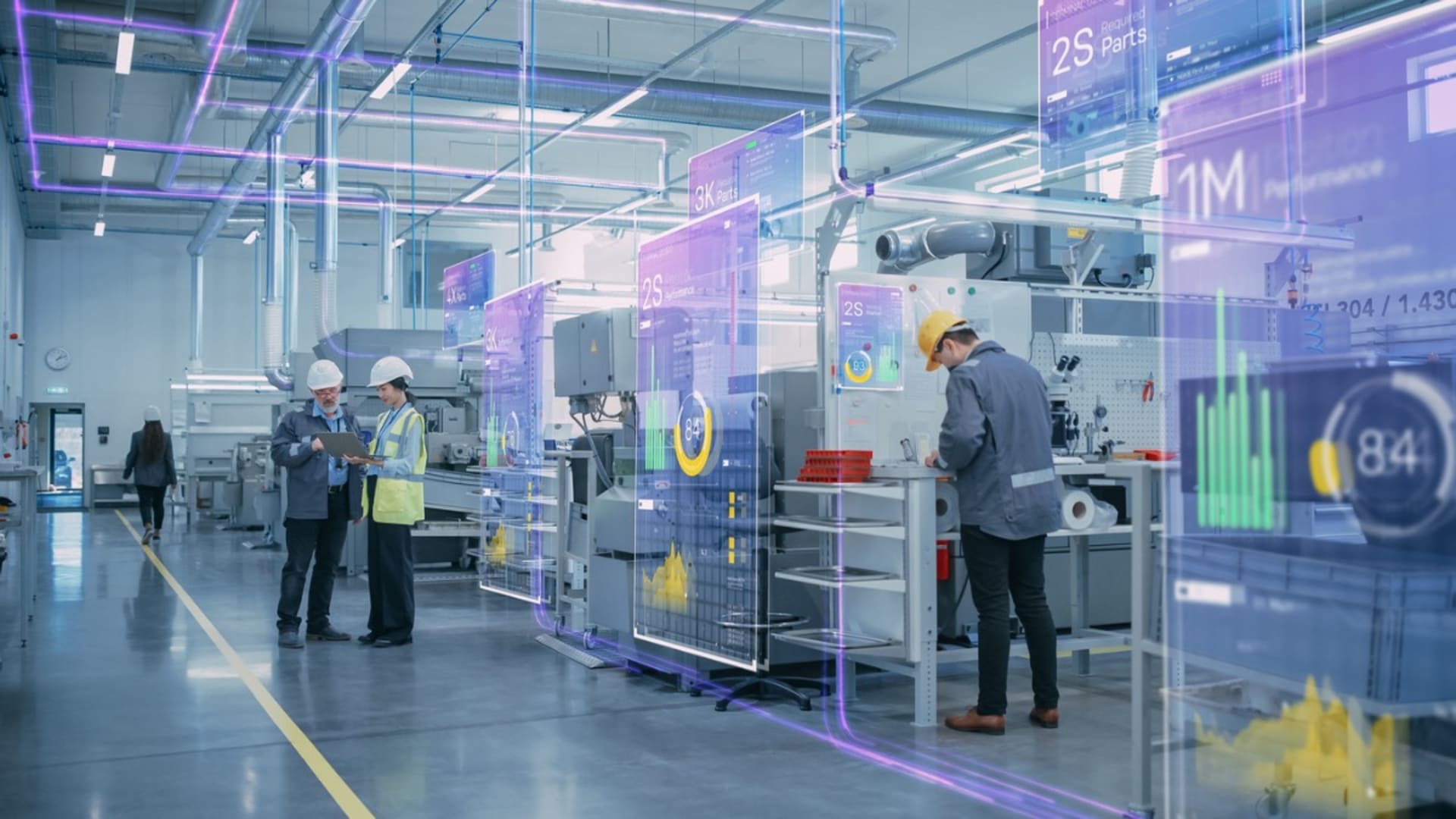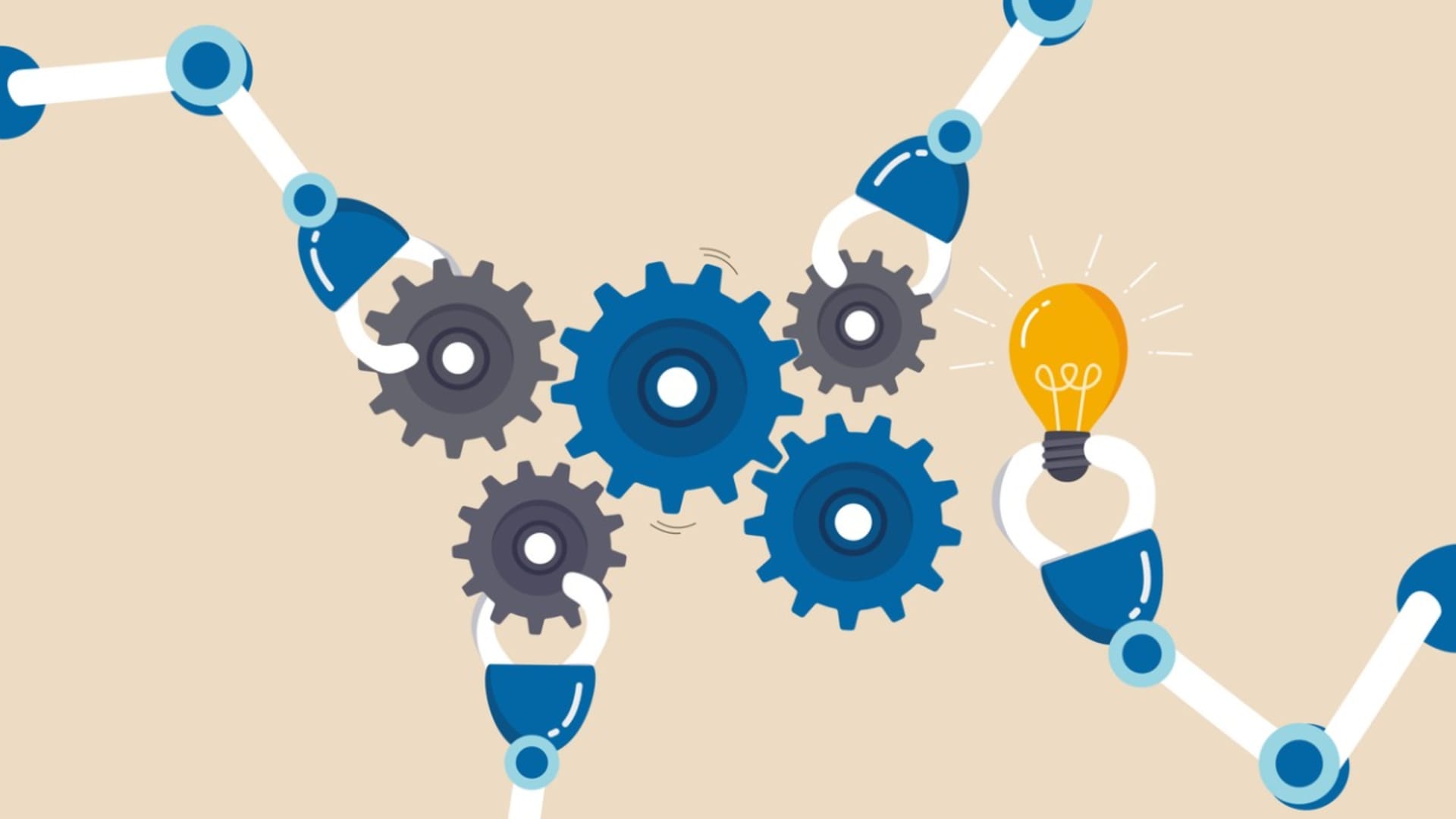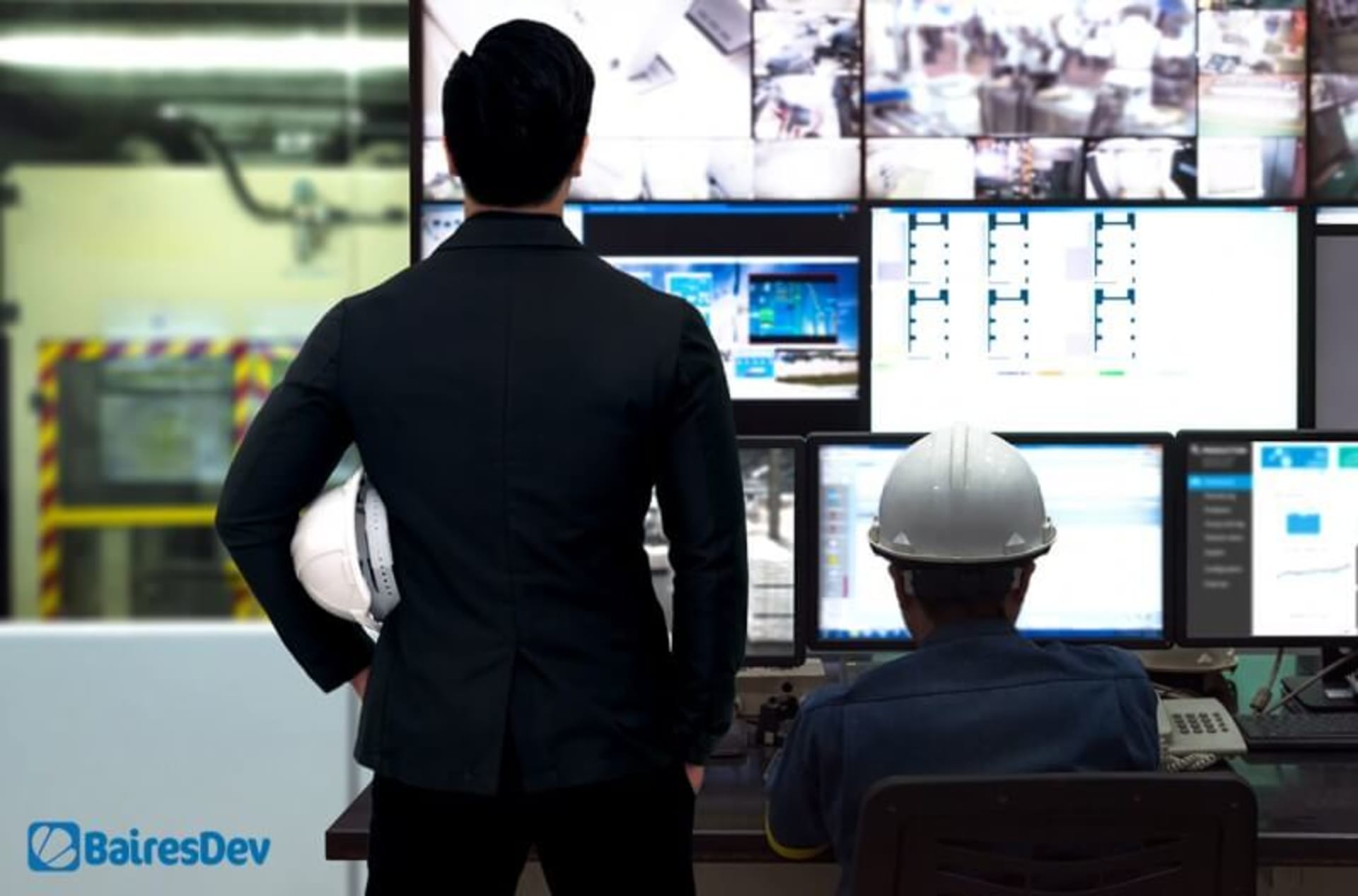- Home
- Industries
- Manufacturing
Manufacturing Software Development
Centralize and streamline processes across the manufacturing industry.
500+ companies rely on our top 1% tech talent.
Manufacturing development services we provide
Production Planning & Scheduling Systems
Enhance manufacturing productivity with production planning and scheduling systems. We optimize production workflows, ensuring efficient planning, scheduling, and resource allocation to meet production targets and streamline operations in the manufacturing sector.
Quality Control & Inspection Software
Ensure product quality with quality control and inspection software. We provide robust tools for quality assurance, inspection, and compliance management. They facilitate accurate monitoring and control of manufacturing processes to meet industry standards.
Supply Chain Management Solutions
Optimize your supply chain with custom solutions. We streamline procurement, logistics, and distribution processes, ensuring efficient coordination and real-time visibility across the supply chain. The result? Enhanced operational efficiency.
Inventory Tracking & Management Applications
Streamline inventory tracking processes with our inventory management applications. We provide solutions for accurate tracking, management, and optimization of inventory levels. This minimizes stockouts and ensures efficient inventory control for your manufacturing operations.
Safety & Compliance Management Software
We offer tools for incident reporting, compliance tracking, and safety management, fostering a secure manufacturing environment and ensuring adherence to industry regulations and standards.
Energy Management & Optimization Tools
Optimize energy consumption. We build solutions for monitoring, analyzing, and lowering energy usage across various manufacturing processes. Our goal is to help you reduce costs and promote sustainability in energy management.
Cloud-Based Data Storage & Collaboration Platforms
Enhance collaboration with our cloud-based platforms. We facilitate secure data storage, real-time collaboration, and document management. This leads to seamless communication and collaboration among team members in manufacturing.
Custom ERP & CRM Integration Platforms
Integrate your processes with our custom CRM & ERP software integration platforms. We tailor solutions to connect manufacturing operations, enterprise resource planning, and customer relationship management systems. The result is a cohesive and efficient business environment.
Types of custom Manufacturing software we can help with
IoT-Enabled Factory Automation Systems
IoT-enabled factory automation systems give manufacturing operations new capabilities. Seamlessly integrate machinery, monitor performance, and optimize processes for increased efficiency and reduced downtime in the manufacturing environment.
Real-Time Production Monitoring Software
Real-time production monitoring software enhances visibility and control. Our solutions provide instant insights into production metrics, facilitating data-driven decision-making and ensuring optimal efficiency in manufacturing processes.
Advanced Analytics & Reporting Tools
Unlock the power of data with advanced analytics and reporting tools. Our solutions offer in-depth enable manufacturers to extract actionable insights, identify trends, and optimize processes for improved performance.
Digital Twin Technology for Process Simulation
Embrace digital twin technology for process simulation. Our software creates virtual replicas of manufacturing processes, allowing for accurate simulation, testing, and optimization before implementation. This maximizes efficiency and minimizes risks.
Robotics & Automated Assembly Line Solutions
Automation transforms assembly line operations. Our solutions streamline production, reduce manual labor, and enhance precision. You get increased productivity and efficiency, which can ultimately lead to increased revenue down the line.
3D Printing & Additive Manufacturing Software
Explore the possibilities of 3D printing and additive manufacturing. From design to production, our solutions facilitate the seamless integration of 3D printing technologies.
AI-Powered Demand Forecasting Systems
Anticipate market demands accurately with AI-powered demand forecasting systems. Analyze historical data, market trends, and external factors. This empowers your team with precise demand predictions, optimizing inventory management and production planning.
Robotics & Automation Integration Platforms
Integrate robotics and automation processes seamlessly with our platforms. Our solutions provide a unified framework for connecting and coordinating various automated systems, ensuring smooth collaboration and efficiency in manufacturing processes.
Custom ERP & CRM Solutions with AI Integration
Integrating AI capabilities, our customized ERP and CRM systems enhance data-driven decision-making, streamline operations, and improve customer engagement for manufacturers.
Other Applications
Explore a variety of additional software possibilities designed to meet unique manufacturing requirements, including warehouse management systems, supply chain optimization tools, and custom solutions tailored to specific manufacturing processes.
Case study
Rolls Royce turned to BairesDev to develop an efficient, user-friendly mobile app. A two-week discovery process with the Rolls Royce product owner identified a comprehensive list of functionalities, data streams, and displays required to meet their clients’ expectations for a mobile SDS. Read the entire Rolls Royce case study.

Benefits of building bespoke solutions
1. Tailored to Your Needs
Custom manufacturing software helps address your individual challenges and workflows. Tailored to the intricacies of the manufacturing industry—and your business in particular—custom solutions provide a precise fit, ensuring efficiency and optimization in your operational processes.
2. Enhanced Data Security
Prioritize data security with custom manufacturing software. You can implement robust measures to safeguard sensitive information and make sure that you stick to industry standards.
3. Scalability
Embrace growth seamlessly with scalable manufacturing software. Custom solutions are designed to expand alongside your business to accommodate increased data, users, and/or functionalities. This scalability allows for long-term viability, supporting your operations as they evolve and grow with the industry.
4. Enhanced Data Insights
Maximize your manufacturing efficiency with our software's advanced analytics tools. Gain comprehensive insights into production processes, supply chain dynamics, and performance metrics. Custom solutions empower the decision-makers on your team with valuable insights to better optimize workflows and drive strategic initiatives.
5. Alignment with Business Goals
Ensure your manufacturing software aligns perfectly with your business objectives. Customized solutions are crafted to meet specific goals, whether that’s improving production efficiency, optimizing supply chain processes, or enhancing quality control.
Which institutions benefit from custom manufacturing software development?
Custom manufacturing software development services offer benefits to a variety of institutions and niches. The software helps address specific needs, improve efficiency, integrate processes, and more.
Large Manufacturing Companies
Large enterprises have complex manufacturing processes and may need custom software to handle high volumes of data, support global operations, and manage supply chains and logistics,
Small and Medium-sized Manufacturing Enterprises (SMEs)
Tailored solutions support SMEs in streamlining their operations, managing inventory more efficiently, and improving production scheduling.
Electronics Manufacturers
Personalized software helps manage the rapid product development cycles and short product lifespans typical in the electronics industry, from precise inventory management to production scheduling and quality control processes.
Automotive Manufacturers
Custom software can support the automotive industry's unique needs, such as managing parts inventories, tracking assembly line production, ensuring quality control, and integrating with supplier systems for just-in-time manufacturing processes.
Aerospace and Defense Manufacturers
Custom software helps aerospace and defense manufacturers manage complex projects, comply with strict regulatory standards, and ensure high levels of security.
Pharmaceutical and Chemical Manufacturers
These types of manufacturers demand tailored software to handle and manage formula-based production processes, ensure compliance with regulatory standards, manage quality control, and deal with sensitive data related to patents and formulations.
Food and Beverage Manufacturers:
Food and beverage manufacturers utilize specialized software for processes like batch production, tracking and tracing ingredients, managing expiration dates, and complying with food safety regulations.
Textile and Apparel Manufacturers
Custom solutions facilitate design, production, and distribution processes.
Custom Machinery and Equipment Manufacturers:
Custom manufacturers need custom software solutions to support their processes, manage orders, track components, and follow delivery timelines.
Why Choose BairesDev for Manufacturing Development

Industry Experts
Our developers have in-depth knowledge of manufacturing processes, ensuring that your solutions align seamlessly with industry requirements and challenges. The result is optimized and efficient software.
Top 1% of Tech Talent
We hire the top 1% of tech talent. Our developers bring exceptional skills, innovation, and a commitment to excellence, ensuring the delivery of cutting-edge, high-quality solutions for your manufacturing needs.
Flexible Engagement Models
We tailor our approach to match your project requirements, offering scalability and adaptability throughout the development process. Choose from staff augmentation, dedicated teams for your organization, or software outsourcing.
Our 4,000+ software engineers are experts in 100+ technologies. We build custom {{industry}} solutions in your preferred tech stack.
Our full repertoireOur process. Simple, seamless, streamlined.
We'll discuss your business goals, budget, and timeline. During this initial call, we'll determine if you need end-to-end software outsourcing or one of our other engagement models.
We'll craft a plan outlining our approach, based on your requirements and the chosen engagement model. We'll also assemble a team of specialists who possess the necessary technical expertise.
Our software engineers will get to work. Throughout the software development process, we will track metrics and keep you informed about our progress to ensure you stay up to date.
Frequently Asked Questions (FAQ)
How can manufacturing software development improve efficiency in my operations?
Manufacturing software streamlines processes, enhances communication, and automates tasks, resulting in improved operational efficiency, reduced errors, and increased overall productivity.
What expertise do developers bring to manufacturing software projects?
Developers should possess specialized knowledge in manufacturing processes, leveraging advanced technologies such as IoT, AI, and data analytics to create tailored solutions that optimize production workflows.
Can developers adapt to our unique manufacturing requirements?
Yes, developers should adapt their approach to meet your specific manufacturing needs. Generally, developers collaborate closely, ensuring that the software aligns with unique operational challenges and objectives.
How do developers ensure the security of manufacturing software solutions?
Security is a priority for top developers. They should implement robust measures, including data encryption, access controls, and regular audits to safeguard manufacturing software, protect sensitive information, and ensure compliance with industry standards.
Beyond manufacturing : 100+ industries covered.
How Businesses Can Overcome the Software Development Shortage
BairesDev Ranked as one of the Fastest-Growing Companies in the US by Inc. 5000

Outsource the heavy lifting to us.Schedule a Call
















